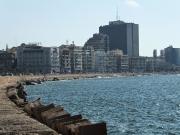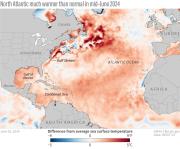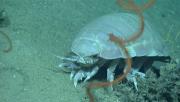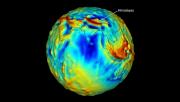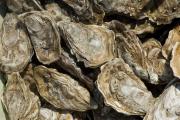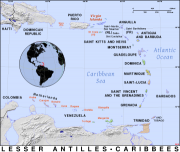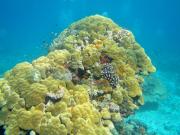Radio Program
Our regular Science and the SeaTM radio program presents marine science topics in an engaging two-minute story format. Our script writers gather ideas for the radio program from the University of Texas Marine Science Institute's researchers and from our very popular college class, Introduction to Oceanography, which we teach to hundreds of non-science majors at The University of Texas at Austin every year. Our radio programs are distributed at to commercial and public radio stations across the country.
Alexandria, Egypt, has stood for almost 2400 years. Today, though, parts of it are crumbling—one building at a time. As Earth’s climate changes, the Mediterranean Sea is rising, the coast is eroding, and saltwater is seeping into groundwater supplies. That weakens buildings, causing them to collapse. And according to a recent study, without action to protect the coastline, the problem will get worse in the years ahead.
Most corals are homebodies. They settle in one spot, link with hundreds or thousands of their friends, and never move. They build the structures we recognize as corals: rock-like spires, branches, domes, and others.
But a few corals “walk” along the sea floor. They don’t go very far. And they certainly don’t get there in a hurry. But their mobility helps them find more stable waters, avoid being buried in the sediments, and have a safe space to reproduce.
Earth’s warming climate has really heated up Atlantic hurricanes in recent years. Two recent studies, in fact, found that hurricane wind speeds were boosted by an average of 18 miles per hour. That was enough to kick most of the hurricanes to a higher category—including some that were juiced up to category five, the most powerful of all.
As the atmosphere heats up, it warms the oceans. And heat is what powers hurricanes. So warmer oceans make hurricanes more intense.
A couple of years ago, marine biologists bought some giant “seabugs” from fishers in Vietnam. The creatures had been pulled from the mud at the bottom of the South China Sea. They were up to a foot long, weighed a couple of pounds, and had armor plating. The creature had never been cataloged before—it was a new species. Its face resembled the mask of Darth Vader, so the scientists named the seabug after him.
There’s a big hole in the Indian Ocean. It’s nothing you can actually see. And the ocean itself isn’t especially deep. Instead, it’s a hole in Earth’s gravitational field—the weakest pull across the entire planet.
The “hole” was discovered in 1948. It’s centered about 750 miles off the southwestern coast of India. It covers more than a million square miles—more than a third the area of the Lower 48 states. Gravity there is so weak that surrounding regions of the ocean pull water away from it. As a result, sea level above the hole is about 350 feet lower than the global average.
For an oyster, gender is more than a matter of genetics—it’s also about the environment. Water temperature, salinity, pollution, and other factors determine whether an oyster will be male or female. And a recent study added something new to the list: acidity.
The great white shark probably is the most feared of all ocean animals. It gained that scary reputation 50 years ago thanks to a blockbuster movie: Jaws. The movie premiered on June 20th, 1975, and quickly became the all-time box office champion. It scared a lot of people out of the water—and set off a frenzy of shark killings. People killed thousands of them, and even competed in shark-hunting tournaments.
When tropical storm systems barrel across the Atlantic Ocean toward North America, they often take aim at the Lesser Antilles—an arc of small islands that marks the eastern boundary of the Caribbean Sea. In fact, the islands often are the first thing forecasters talk about when a tropical system heads our way.
For some coral, home isn’t where the heart is—it’s where the sounds are. A recent study showed that one type of coral prefers to settle on reefs that sound healthy—even if they’re not.
Young corals, known as larvae, float or swim through the water for a while. When they find a good spot, they drop to the bottom and grab hold. They use several cues to find the best locations, including the lighting and chemistry. And according to the study, one of those cues might be sounds.
The oceans are losing their memory. That could make it harder to forecast everything from monsoons to blizzards.
Ocean “memory” is maintained in the top layer, called the mixed layer. Winds push warm surface water downward, where it mixes with water at greater depths. This layer is typically about 150 feet thick. And overall, it maintains a fairly constant temperature. When the temperature changes as the result of some major event, it can take 10 to 20 years for the change to dissipate. In other words, the ocean maintains the “memory” of what happened to it for that long.

